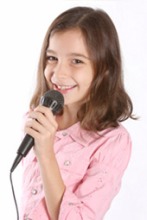 As we know that there are various ways to learn how to read music, some are quicker than others, but no matter what technique we use as long hours cannot be avoided. We should never expect to be able to read music in a day. Children are the most interesting creation in the world as they love to have fun with all things they do. Teachers and parents need to learn them to read music with fun and joy. So why not learn how to read music and have fun at the same time? Children are able to learn to read music quite easily with the correct instruction. These steps need to be fun, with lots of admiration and awards when correct answers are given. Often, this is not so easy in a school level, but parents and teachers those involved with children on a casual basis may find very interesting ways. These ways are:
As we know that there are various ways to learn how to read music, some are quicker than others, but no matter what technique we use as long hours cannot be avoided. We should never expect to be able to read music in a day. Children are the most interesting creation in the world as they love to have fun with all things they do. Teachers and parents need to learn them to read music with fun and joy. So why not learn how to read music and have fun at the same time? Children are able to learn to read music quite easily with the correct instruction. These steps need to be fun, with lots of admiration and awards when correct answers are given. Often, this is not so easy in a school level, but parents and teachers those involved with children on a casual basis may find very interesting ways. These ways are:
- Find Activities:Find an activity or game that children enjoy Kids singing lessons , that has a dependence on memory, such as certain computer games.
- Redesign activities:teachers and parents need to redesign activities so that it includes elements of reading music. This can be simply drawing notes and their matching letter names on cards and playing concentration.
- Ensure activities:Ensure that the children can see the music lines with spaces in between. While this may seem understandable, it is not always the case. Model how to turn their hand sideways with fingers spread wide and name each finger-line from the bottom going up. Take an example, little finger is E, ring finger – G, middle finger – B, pointing finger D, thumb is F. To help children always remember, use a reminder that appeals to the child: Every Good Boy Does Fine – old and trusted, but try others.You might mention that this is why music is written on 5 lines, called the musical staff.
- Reinforce activities:All activities will reinforce the foundation of learning to read music, and this maytake several weeks. Regular experience will helps again with continual praise and rewards for those children who remember easily. Use flashcards, each with a note of the Clef that children can handle and movement easily on a table, or floor space. Children should be able to separate lines from spaces, then to put these in order to beginning with the lowest.
- Pitch and rhythm:These two main elements; pitch and rhythm are the foundation for teaching children to read music with great efficiency. They can be taught separately but will ultimatelymix into one as concepts are understood. Taught using a cyclical technique, where information is given in full and some of it used in practice. Then information given again for another activity that is one of the best ways to adhesive this knowledge. It should be non-threatening environment for children so that they can have fun while learning to read music, hands on.